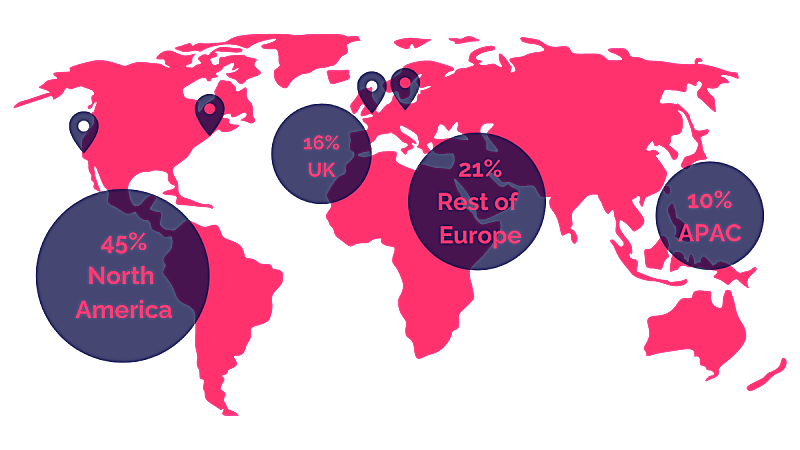
Event sponsorship & digital marketing
solutions
What is LeadDev?
LeadDev is where Senior Engineering Leadership comes to learn, discover new solutions, and find ways to improve the effectiveness of their engineering teams.
Engineering leaders hate sales and marketing.
Does that sound familiar?
Engineering leaders trust LeadDev to provide them with valuable content. By partnering with us, you can meaningfully connect with this difficult-to-reach audience.
Why partner with us?
We understand how to position your company’s solutions to drive demand from engineering leaders.
Work with us to create a campaign to achieve your most challenging objectives:

Lead Generation
Secure meetings at the event with key prospects during dedicated networking sessions

Product Showcase
Run live demos with prospects at the event to showcase your solutions

Relationship Building
Make meaningful connections with key decision-makers from the engineering leadership community

Thought Leadership
Bespoke speaking opportunities will position your brand as a key supporter and educator of the market

Brand Awareness
Get brand exposure to our 50,000+ strong leadership audience from the get-go
50k+
Global community of engineering leaders
86%
Of our audience are directly involved with/have influence over key procurement decisions
1 million
Unique visitors to LeadDev.com
Our solutions

Event sponsorship
Connect with thousands of engineering leaders in-person at our flagship events.

Networking & editors dinners
A highly targeted opportunity that guarantees quality face time with senior engineering leaders who match your ICP.

Research, surveys and reports
Work with our content experts to build a piece of research that provides real value to our audience whilst subtly positioning your brand as a solution to engineering challenges.

Online panel discussions
Publish excellent content with our team. Have a speaker participate in a panel discussion alongside industry experts, capturing leads from all registrants. Bespoke and pre-programmed options available.

Advertising
Ensure your brand is front of mind for our global community of engineering leaders, with advertising opportunities across weekly newsletters and the website leaddev.com.
Our audience

Job titles
Engineering Managers
Directors/VPs of Engineering and CTOs
Tech Leads
Very senior ICs
Senior Software Engineers
Industries
Software
e-commmerce
Financial services
Media & entertainment
Retail
Consulting
Healthare
Company size
1000+ : 47%
500–999 : 10%
250–499 : 11%
100–249: 15%
<100: 17%
Why sponsors love LeadDev

I wish LeadDev happened all year round.
Every time we go, our calendar fills with high-quality demos. It’s been a huge driver of our pipeline and growth.
Hamza Zia
Founder & CEO, Gitstart

The targeted outreach and 1:1 meetings helped us connect with people onsite. LeadDev created high value opportunities in our pipeline that converted.
Incident.io team

LeadDev has a unique proposition in terms of bringing together a certain persona that we arguably couldn’t find elsewhere.
Tim Bush
Global Head of Events, CircleCI

































